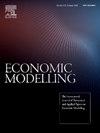可解释的机器学习揭示了全球能源风险溢出的非线性驱动因素:tpv - var方法
IF 4.7
2区 经济学
Q1 ECONOMICS
引用次数: 0
摘要
本研究使用时变参数向量自回归(TVP-VAR)模型和可解释性机器学习来检验全球能源风险溢出。与以往的研究受单因素分析和线性假设的限制不同,我们解决了三个关键的局限性:捕获多维驱动因素,解决多重共线性问题,建立非线性动力学模型。我们的研究结果表明,在长期因素的驱动下,溢出效应是暂时波动的,能源丰富和快速转型的经济体是主要的传导因素。机器学习模型优于线性回归,识别经济发展、能源结构和国际收支之间的关键非线性相互作用。地区差异明显:欧洲和美国优先考虑经济增长,中国侧重于资本流动,而日本和以色列则强调石油进口。通过将可解释的机器学习与TVP-VAR相结合,本研究推进了系统性风险分析,并为政策制定者提供了可操作的、针对特定地区的能源市场稳定策略。本文章由计算机程序翻译,如有差异,请以英文原文为准。
Interpretable machine learning unveils nonlinear drivers of global energy risk spillovers: A TVP-VAR approach
This study examines global energy risk spillovers using a time-varying parameter vector autoregression (TVP-VAR) model and interpretable machine learning. Unlike previous studies constrained by single-factor analyses and linear assumptions, we resolve three key limitations: capturing multidimensional drivers, addressing multicollinearity, and modeling nonlinear dynamics. Our findings reveal that spillovers fluctuate temporally, driven by long-term components, with energy-rich and rapidly transforming economies as primary transmitters. Machine learning models outperform linear regression, identifying critical nonlinear interactions among economic development, energy structure, and balance of payments. Regional heterogeneity is pronounced: Europe and the U.S. prioritize economic growth, China focuses on capital flows, while Japan and Israel emphasize oil imports. By integrating interpretable ML with TVP-VAR, this study advances systemic risk analysis and provides policymakers with actionable, region-specific strategies for energy market stability.
求助全文
通过发布文献求助,成功后即可免费获取论文全文。
去求助
来源期刊

Economic Modelling
ECONOMICS-
CiteScore
8.00
自引率
10.60%
发文量
295
期刊介绍:
Economic Modelling fills a major gap in the economics literature, providing a single source of both theoretical and applied papers on economic modelling. The journal prime objective is to provide an international review of the state-of-the-art in economic modelling. Economic Modelling publishes the complete versions of many large-scale models of industrially advanced economies which have been developed for policy analysis. Examples are the Bank of England Model and the US Federal Reserve Board Model which had hitherto been unpublished. As individual models are revised and updated, the journal publishes subsequent papers dealing with these revisions, so keeping its readers as up to date as possible.
 求助内容:
求助内容: 应助结果提醒方式:
应助结果提醒方式:


